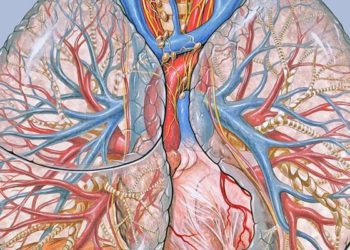Risk of dementia with air pollution exposure amplified in patients with heart disease
1. Exposure to higher levels of air pollutants was associated with increased dementia incidence, with the 5 years preceding onset being the most impactful.
2. The association between dementia and air pollutant exposure was amplified in patients with cardiovascular disease, specifically heart failure and ischemic heart disease.
Evidence Rating: 2 (Good)
With increasing rates of dementia and no curative treatment being available, identification of risk factors and possible preventative measures continues to be a priority in addressing the issue. A ir pollution has recently been identified as risk factor for the development of dementia. Currently, the role of cardiovascular disease (CVD) in this association is unknown. In this retrospective cohort study, researchers analyzed the data of 2977 participants from the ongoing Swedish National Study on Aging and Care in Kungsholmen (SNAC-K) to address this knowledge gap, hypothesizing that CVD may mediate and strengthen the association between air pollution and dementia incidence. Patients were recruited between 2001 to 2004, with follow-up up to 2013. Particulate matter and nitrogen oxide were identified as the two major air pollutants with yearly assessment, and dementia and CVD (including atrial fibrillation, ischemic heart disease, stroke, heart failure) were identified as main outcomes. Mean age of participants was 74.1 years, and 364 incident cases of dementia were identified during follow up, 72.3% of which were women. A higher hazard of dementia was found per interquartile range (IQR) difference of particulate matter ≤2.5 μm (PM2.5) (HR, 1.54; 95% CI, 1.33-1.78; IQR difference, 0.88 μg/m3) and nitrogen oxide (NOx) (HR, 1.14; 95% CI, 1.01-1.29; IQR difference, 8.35 μg/m3) concentrations during the 5 years preceding onset, though no association was found during the 6 to 11 years before the event. Interestingly, higher risk of dementia were associated with exposure to PM2.5 and NOx in persons with heart failure (interaction HR, 1.38 [95% CI, 1.06-1.81] and 1.35 [95% CI, 1.05-1.72], respectively) and ischemic heart disease (interaction HR, 1.13 [95% CI, 0.90-1.48] and 1.22 [95% CI, 0.95-1.60], respectively), but not for strokes and atrial fibrillation. Instead, stroke appeared to be the primary intermediate condition, accounting for 49.4% of air pollution-related dementia cases. In terms of study implications, these findings suggest reduction of air pollution as a potential means to reduce future dementia incidence, and reemphasizes the importance of optimal CVD management and prevention.
Click to read the study in JAMA Neurology
Image: PD
©2020 2 Minute Medicine, Inc. All rights reserved. No works may be reproduced without expressed written consent from 2 Minute Medicine, Inc. Inquire about licensing here. No article should be construed as medical advice and is not intended as such by the authors or by 2 Minute Medicine, Inc.







